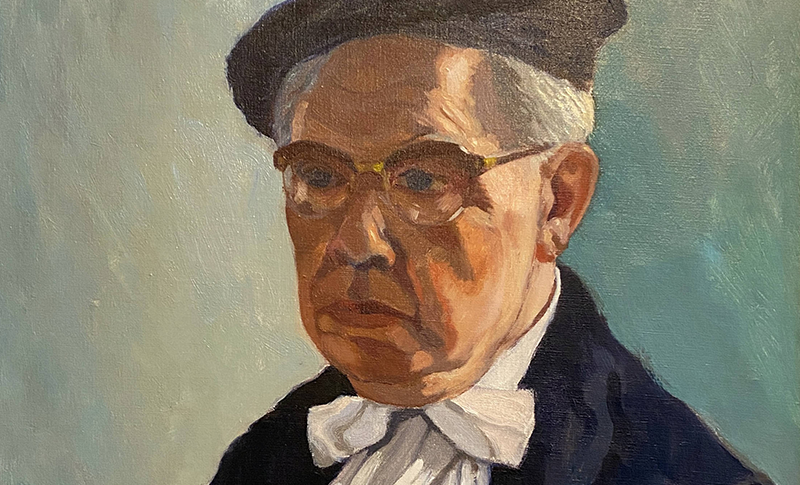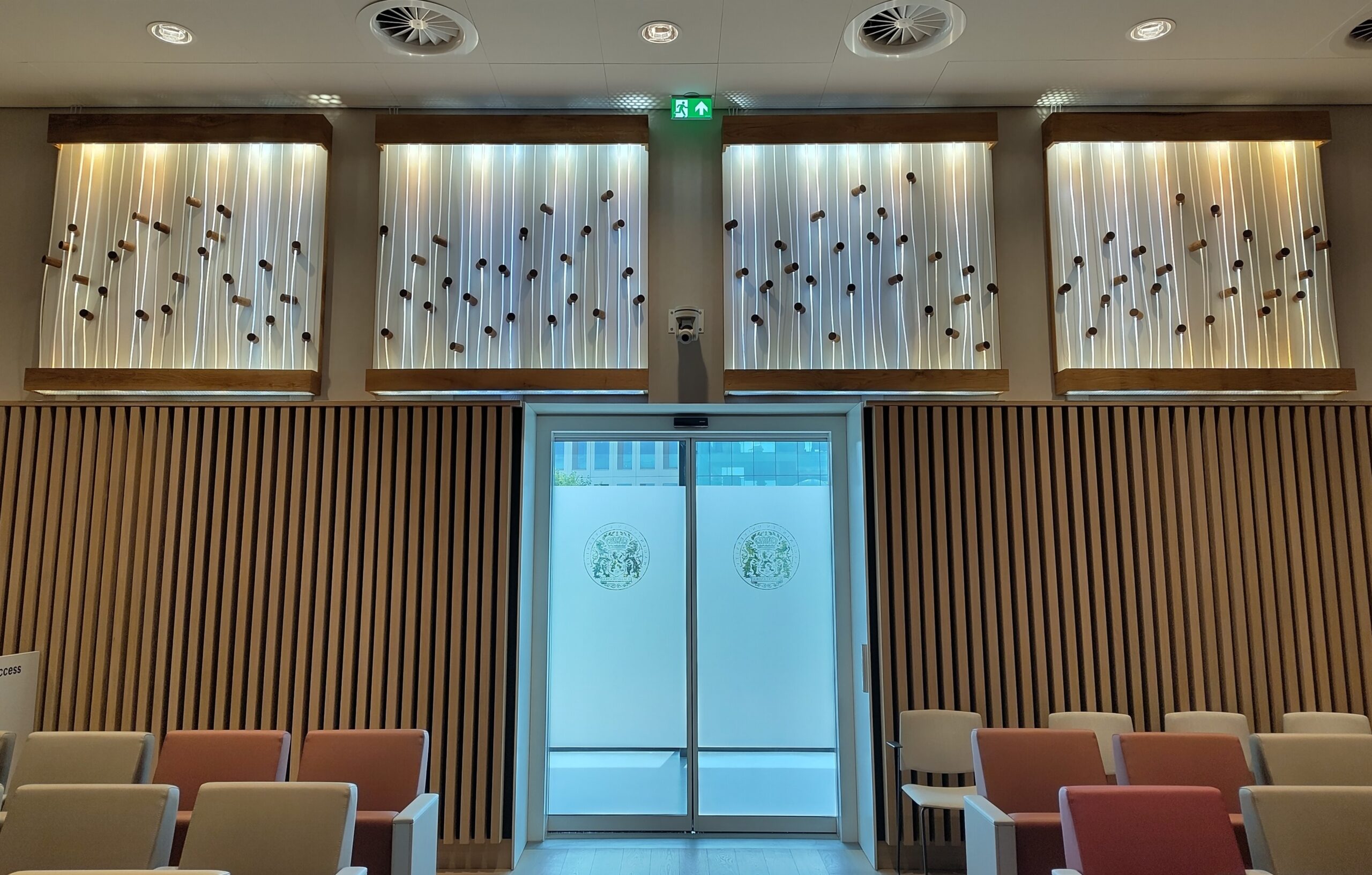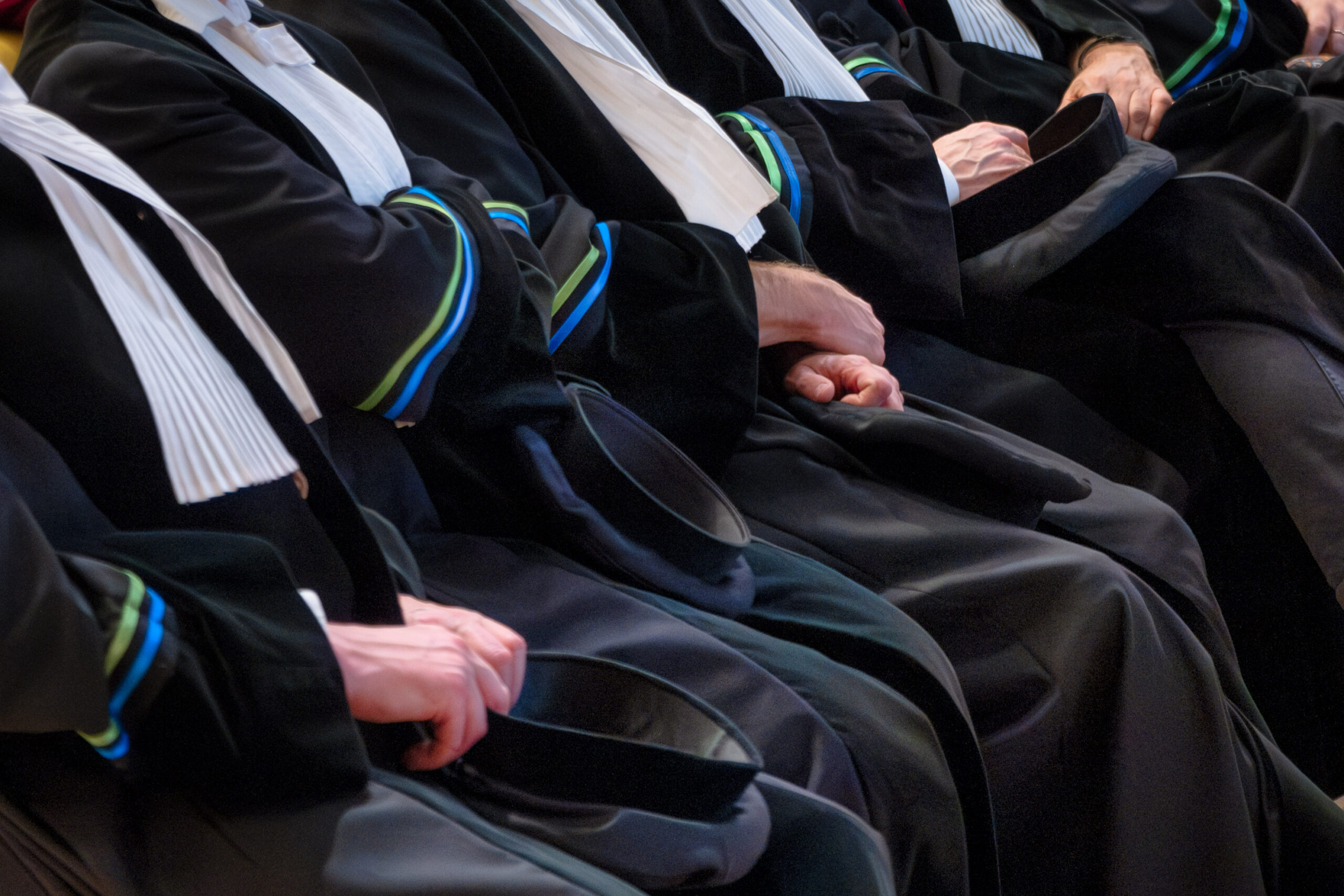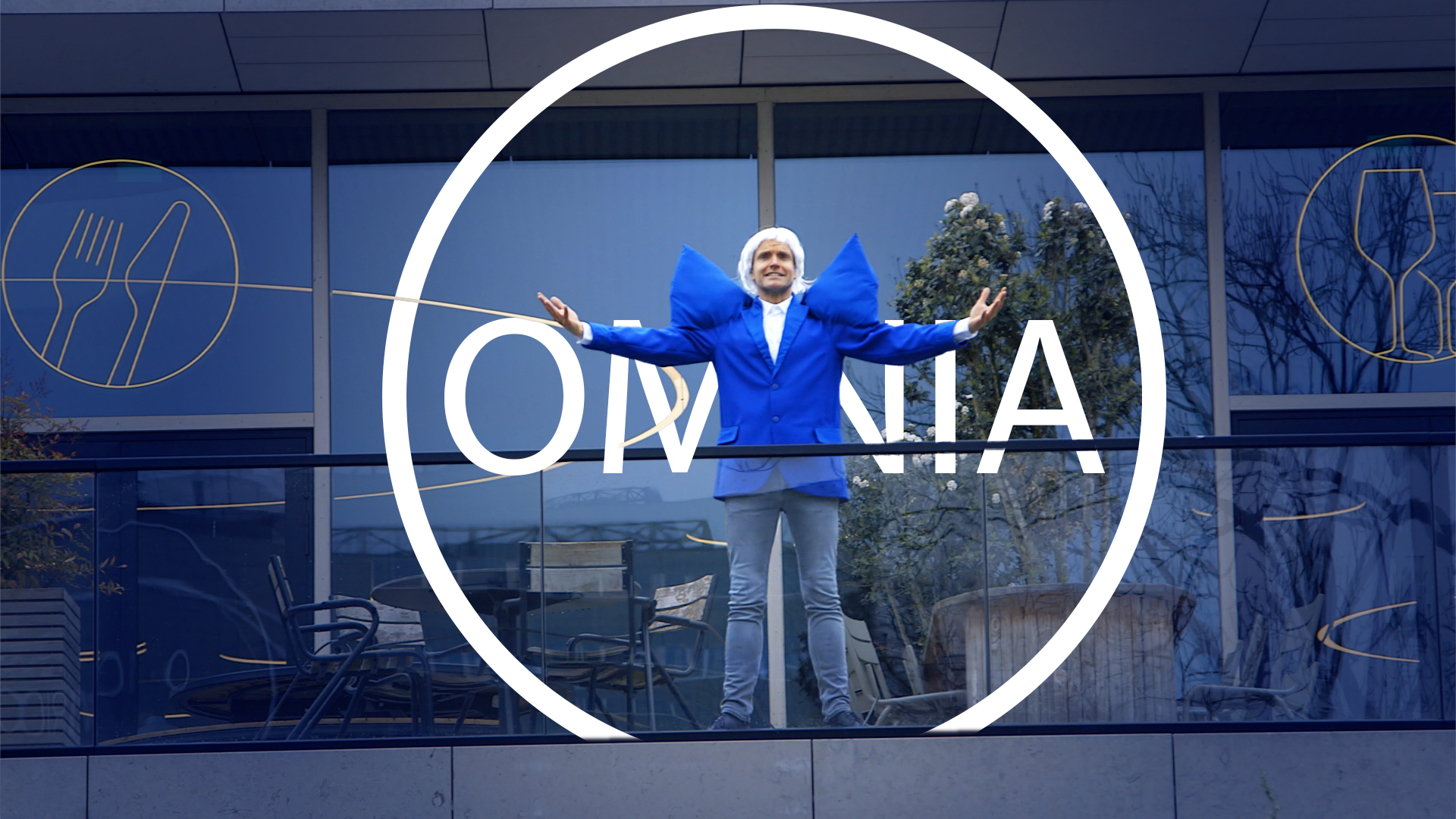The hall of fame in Omnia includes one portrait of a mystery professor. No one knows who he is. But we can’t leave it at that, can we? This is the (unfinished) story of a quest.
My first reaction was one of disbelief. It was late May last year and the hall of fame in Omnia had just been completed. On a table in the portrait gallery lay an A4 sheet with a Who’s Who. Next to number 31, it said ‘Unknown’. A more blatant indifference to your own history is hard to imagine. This was crying out for further investigation.
The portrait gallery – sneeringly dubbed ‘the wall of men’ by Resource – displays 33 paintings of eminent Wageningen professors. Male professors. WUR does own a portrait of Mien Visser, Wageningen’s first woman professor, but according to the wall’s curators, the style of her portrait is so out of line with the others that it couldn’t be hung among the men.
Narrowing the field
But who was Professor X? The men’s wall features two types of professors. Half of them are former rectors of the university. The other half are not, but were apparently eminent (or vain?) enough to have their portrait painted. We don’t know which group Professor X belongs to. For convenience – it narrows the field – I decided to assume that he was a rector. There have been 46 of these in WUR’s 105-year history, and 17 of the portraits are known to be of a rector. That still left 29 rectors as candidates.
Fortunately, there were other clues too. The name of the painter is known: it is François Jacob Diederich (Frans) Boers, a painter of portraits and landscapes originally from Liège, who lived from 1914 to 1987 and painted from 1934 to 1987, according to Wikipedia. That narrowed the search window to 16 professors. But unfortunately, Frans Boers was not a famous artist. As far as we know, there is no list of his paintings or clients, and the internet offers only a few biographical details. The Netherlands Institute for Art History (RKD) has no further information either.
Royal honour
A third clue was a detail on the painting itself. Professor X obviously received a royal honour. Several portraits show the same medal, which turns out to be the Knighthood in the Order of the Dutch Lion. So could the Chancery of Netherlands Orders provide a list of Wageningen knights of that order? No, responded a spokeswoman for the chancery. The online register can only be searched by name and not by place of residence or place of issue. That’s a pity, but knighthood remained a selection criterion. Only candidates who had received this knighthood were to be considered.
The only remaining option was to dig around for information about the lives of the 16 candidates. Googling, in other words. And one December Friday afternoon – this is that kind of project – fortune smiled on me. One of the first candidates on the list was professor of Botany Eildert Reinders (1885-1979), who was rector from 1939 to 1940. Up until 1956, rectors were appointed for just one year.
A sizeable section of Jan van der Haar’s History of the Agricultural University Wageningen is devoted to Reinders. Going by the accompanying photos, it could be him. The evidence got stronger when it emerged – from an annual address by the then rector – that the professor was presented with a portrait by friends and students on his retirement in 1955. He also received the requisite knighthood in 1931. Information from the chancery included his eldest son’s last known address, and it turned out that a member of the family still lives there – the son’s elderly widow. She doesn’t have email, but I was welcome to come by to show her the portrait, she said on the phone.
Adamant
So off I went one Tuesday morning to a little village north of Utrecht, with a photo of the portrait and (almost) totally convinced that the search would now come to a perfect end. Mrs Reinders-Stoutjesdijk lives in a beautiful wooden villa. She was Eildert Reinders’ daughter-in-law, so she knew him well. But she was quite adamant: the man in the picture is not her father-in-law. And as for the portrait given to him at his farewell, she had never heard of it. It certainly wasn’t in the family.
The 15 other rectors under consideration were all been ruled out too for various reasons. They didn’t have the right medal and/or the available photos didn’t match the painting. The only question mark that still remains is over Professor of Animal Physiology Ede Brouwer (rector from 1948 to 1949). I cannot find a portrait of him as yet.
Crossed off
A few weeks ago it suddenly looked as though the riddle had been solved after all. There was a new Who’s Who on the table in Omnia. And a name had appeared next to number 31: Professor of Land Development Folkert Hellinga, who was rector from 1965 to 1970. How could that be? I had already crossed him off the list because he didn’t have the required knighthood. My doubts turned out to be justified. Enquiries revealed that Hellinga was accidentally designated as the subject of the portrait.
So this remains a story without a happy ending, at least for now. The list of possible (non-rector) candidates is long and Resource editors are not at a loose end that often. Who can help us identify Professor X?
To be continued (no doubt).

 Johannes Hendrikus Becking, by Francois Jacob Diederich Boers
Johannes Hendrikus Becking, by Francois Jacob Diederich Boers 


In light of the earlier article “Omnia ‘wall of men’ questioned” [https://www.resource-online.nl/index.php/2022/11/15/omnia-wall-of-men-questioned/?lang=en], it’s even stranger to me that WUR would hang a portrait of someone we can’t even identify. Because of the toga and pin and certain other traits, he must belong in the hall of fame??
Eerder dacht ik dat het dr ir G. Minderhoud, hoogleraar landhuishoudkunde, rector 1952-1953, was. Maar toen bleek dat er een ander portret van hem in de galerij hangt. Maar kijk er eens zo tegenaan: Het portret van professor X is van heel matige kwaliteit. Ik denk dat Minderhoud het zo slecht vond dat hij zichzelf nogmaals liet schilderen maar vergat het oude te laten vernietigen. Vandaar dat hij er nu dubbel in hangt.
Pim Brascamp.